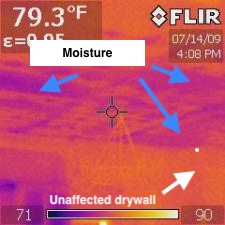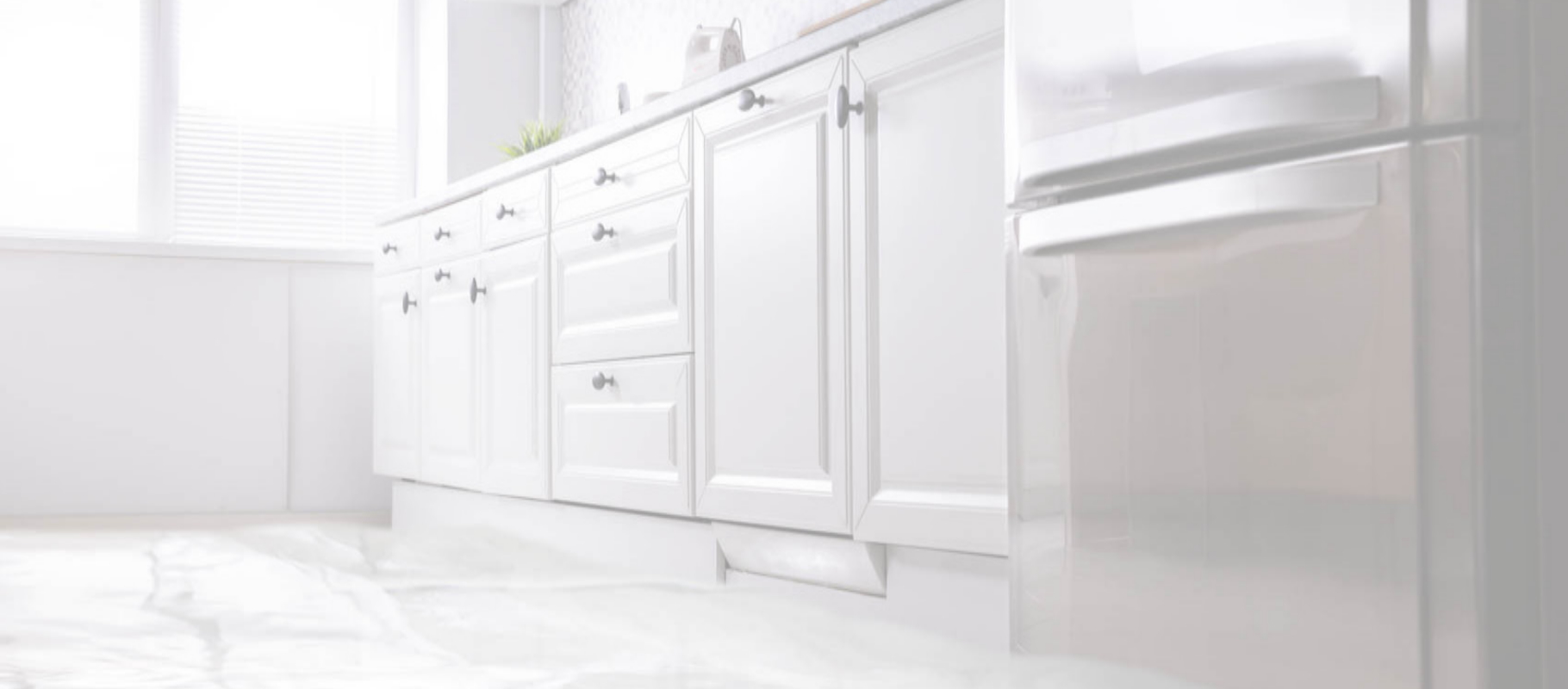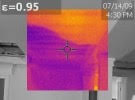
One of the reasons why water damage can be so difficult to clean up is because of how far it can spread. Water can travel over and down throughout your home, causing problems that go far beyond the initial leak source.
It can spread into areas you can’t see, causing problems you may not discover until they have become huge. Additionally, it’s hard for homeowners to know if all the water is gone - any moisture left behind can continue to cause issues. This is why help from experienced water damage professionals is so important - we know where to look (and how to look) for all of the destruction that leaks can cause.
In this article, we are showing images from a project at a Westport, Connecticut house. Three stories of the home were flooded from a second-floor toilet all the way down into a finished basement. In order to understand the extent of the damage, we used digital infrared thermal imaging or DITI. Digital infrared thermal imaging is a type of thermography that uses an infrared camera to detect temperature differences. Thermography is used in many industries, such as healthcare, construction, and even by firefighters in emergencies.
In the restoration industry, we use it to reveal temperature differences in a variety of building materials. Temperature differences often indicate the presence of moisture that might otherwise be undetectable. In the thermogram images from this project, you can see the darker-colored pattern in the photos with the blue arrows. These areas are colder due to evaporative cooling - a sign of water damage. After recording these images, we used a moisture meter to get a value of the moisture content, confirming that these specific structural components were wet.
The next thermal image is a picture of the ceiling that was soaking wet - even though it looked completely dry to the naked eye. This was because the walls and ceilings were painted with an oil primer that acted as a moisture barrier. This prevented some of the water from leaking through the drywall ceiling - making it hard to identify the water damage. The second thermal image - surrounded by a digital photo of a section of the ceiling - reveals water cascading onto the ceiling from above in real time.
When you review the images from this Westport project, it’s easy to see how digital infrared thermal imaging can help your restoration team find and repair all evidence of water damage. There are other advantages to utilizing thermal imaging with regard to property damage:
Clear, Objective Documentation
One of the key factors in presenting your claim to your insurance company is documentation, and thermal imaging can be a very effective way to provide visual evidence of specific damage to your property. It can also be a great way to document and confirm that the drying process is working.
Ongoing Monitoring Prevents Future Problems
In addition, thermal imaging can be very instrumental in ongoing monitoring of the affected area. This ensures that your restoration project is complete and that there aren’t additional areas of dangerous, unseen damage or mold-growing moisture.
Contact Riverside Restoration To See A Clear Picture Of A Safe Home
If your Connecticut home has experienced water damage, don’t put your family at risk. Mold, mildew, electrical problems, and even structural damage can all occur as a result of a slow leak or a sudden flood. Riverside Restoration has the knowledge, tools, and techniques necessary to ensure that your home gets back to normal as quickly as possible. Contact us today to get the help you need.
Location: Westport, CT


